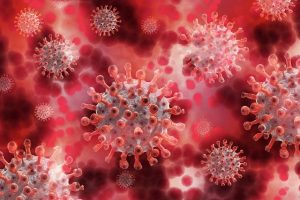Can breast atypical ductal hyperplasia cause breast cancer?
- Mifepristone: A Safe and Effective Abortion Option Amidst Controversy
- Asbestos Detected in Buildings Damaged in Ukraine: Analyzed by Japanese Company
- New Ocrevus Subcutaneous Injection Therapy Shows Promising Results in Multiple Sclerosis Treatmen
- Dutch Man Infected with COVID-19 for 613 Days Dies: Accumulating Over 50 Virus Mutations
- Engineered Soybeans with Pig Protein: A Promising Alternative or Pandora’s Dish?
- Severe Fever with Thrombocytopenia Syndrome (SFTS): A Tick-Borne Threat with High Mortality
Can breast atypical ductal hyperplasia cause breast cancer?
- Red Yeast Rice Scare Grips Japan: Over 114 Hospitalized and 5 Deaths
- Long COVID Brain Fog: Blood-Brain Barrier Damage and Persistent Inflammation
- FDA has mandated a top-level black box warning for all marketed CAR-T therapies
- Can people with high blood pressure eat peanuts?
- What is the difference between dopamine and dobutamine?
- What is the difference between Atorvastatin and Rosuvastatin?
- How long can the patient live after heart stent surgery?
Can breast atypical ductal hyperplasia cause breast cancer? Breast atypical ductal hyperplasia is considered a benign disease, but it does not rule out the possibility of breast cancer.
Atypical ductal hyperplasia (ADH) refers to the number of cells in the lining of the breast ducts than usual. These cells have some low-grade ductal carcinoma in situ (DCIS) characteristics in terms of growth pattern and appearance. ADH is a benign breast disease, but there is still a risk of breast cancer.
If you have a core biopsy that found atypical cells, your doctor may continue to remove more tissue in the area. However, since ADH is not a real cancer, there may be some changes in how doctors treat them.
Some doctors believe that after the initial biopsy is confirmed, no additional surgery is needed. Whether to remove the hyperplastic part must be carried out according to the specific situation.
For ADH, you can consult other doctors to give a second diagnosis and treatment opinion, and ask other pathologists to check tissue samples. It is worth noting that atypical hyperplasia is not early breast cancer.
Regardless of your condition, it makes sense to be followed up by a doctor with expertise in breast health. Usually, a follow-up physical examination is performed at 6 months, and mammograms can be recommended. After that, most women can recover annual mammograms. Under certain circumstances, the doctor may increase breast MRI.
For some women, doctors may recommend hormone therapy such as tamoxifen, raloxifene, or aromatase inhibitors to reduce the risk of breast cancer.
Studies have found that most ADH cells are positive for estrogen and progesterone receptors.
However, these treatments have side effects, so your personal circumstances will determine whether the benefits outweigh the risks.
(source:internet, reference only)
Disclaimer of medicaltrend.org



